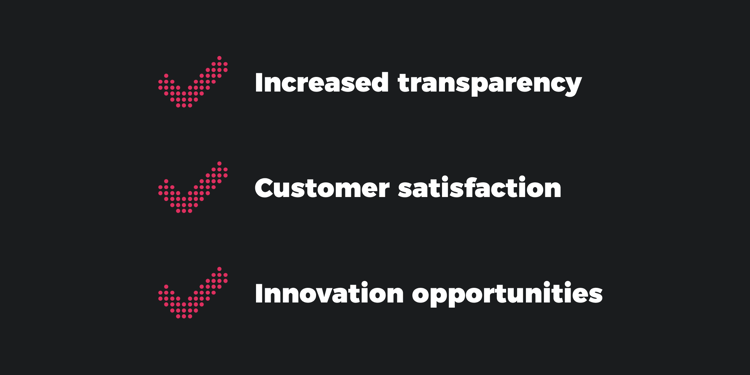How banks can wow customers with real-time payments

Customers now expect transactions to be as swift and seamless as their online interactions. Embracing real-time payments (RTP) is not just a technological upgrade; it's a way to get ahead of your competition. This modern payment solution provides banking customers with immediate availability of their funds, transparency, and continuous payment possibilities - fundamentally transforming their banking experience.
Introducing real-time payments for banks
RTP instantly transfers money between accounts, regardless of the financial institution, and is available 24/7/365. Traditional payment methods, which may require several business days to process transactions, make instant payments alluring to customers and businesses who want to receive payments on the same business day.
For financial institutions, the adoption of RTP signifies a strategic shift. Instant digital payments dramatically enhance the customer experience, meeting the increasing demand for immediate, transparent transactions.
Benefits and challenges of real-time payments
Benefits of immediate payments:
- Increased transparency: Transactions are traceable in real-time, promoting transparency and fostering trust.
- Customer satisfaction: Real-time payments respond to customer demands for instant and easy transactions, thereby improving customer satisfaction and loyalty. RTP systems operate round the clock, allowing customers to make transactions anytime, anywhere.
- Innovation opportunities: RTP paves the way for new financial products and services, creating potential for new revenue streams.

Challenges of real-time payment systems:
- Upgrading infrastructure: Banks need to invest significantly in their infrastructure and technology to adapt to RTP, which may be a financial burden.
- Regulatory compliance: RTP must comply with a variety of financial regulations which can be complex and vary by region.
- Interoperability: Ensuring the RTP system works seamlessly with existing banking systems can be a technical challenge.
- Customer adoption: Despite all its benefits, convincing customers to adopt and trust in the new system may take time and effort.
What are the key features of real-time payments for banks?
Provide a seamless payment experience with faster transaction times
Real-time payments reduce the transaction time for customers, allowing them to instantly transfer funds between bank accounts. This immediate access to funds and unparalleled convenience enhances the customer experience while fostering trust with banks.
Streamline operations and improve cash flow with automated workflows
The automation of the payment process enables banks to streamline operations and improve cash flow. Banks can reduce manual processes involved in traditional payments, such as reconciliation and dispute management, resulting in cost savings.

Utilize advanced fraud protection and security measures to protect customers
Real-time electronic payments are settled instantly, meaning there is no risk of double spending or fraudulent transactions. Banks can benefit from advanced fraud protection mechanisms like artificial intelligence and machine learning to detect and prevent suspicious activity.
Leverage robust analytics to monitor performance, explore opportunities, and track trends
Real-time analytics enable banks to monitor transaction performance in real-time, allowing them to quickly identify issues and take corrective action. This data can be used to explore opportunities for growth, such as new markets or services.
Banks can also use this data to track consumer trends, helping them stay ahead of the competition. Your financial institution can leverage this data to launch future innovative financial products, as well as gain insights into customer behavior.
What should banks consider when rolling out a real-time payments program?
When rolling out instant payments for your customers, banks should consider the following:
- Customer awareness and education: Banks should take steps to ensure customers are aware of the new real-time payment system and how to use it. This may involve providing customers with educational materials or training sessions.
- Technology: Banks should ensure that the technology used for real-time payments is up to date and meets regulatory requirements. Consider using a phased approach when updating your tech stack. See the below graphic to download Episode Six's Progressive Modernization Playbook to learn key considerations when strategizing a future-proof payments infrastructure.
- Data security: Banks should evaluate their data security measures and take steps to ensure all customer data is safe and secure.
- Regulatory compliance: Banks should familiarize themselves with the regulatory requirements for real-time payments in their region and take steps to ensure compliance.
What is the difference between RTP and ACH?
ACH is a batch-processing system, where transactions are queued and processed in batches rather than in real-time. This process can take up to three business days, making it slower in comparison - even when comparing the real-time payments network to same-day ACH transactions.
However, ACH has been a trusted method for decades and can handle large volumes of payments, making it a popular choice for payrolls, direct deposits, and bill payments.
In essence, the primary distinction between RTP and ACH lies in their speed and processing. While RTP provides an immediate, round-the-clock service, ACH operates on a slower, more traditional batch schedule.
How Episode 6 can help
Real-time payments offer banks an exciting opportunity to transform customer experience, streamline operations, and tap into new sources of revenue. To reap the full benefits of this payment strategy, your banking system must understand the implications and invest in the necessary resources and support from technology providers.
At E6, we follow a progressive modernization approach so you can roll out new, innovative products to market faster without disrupting your existing tech stack. E6 empowers you with robust infrastructure to swiftly provide cutting-edge payment solutions, whether you're a top global bank or a fintech.
With real-time adaptability, you'll stay ahead of changing trends, leading the way in payments technology. Contact us today to see how you can implement real-time payments into your bank's offerings.

E6 Team
About the Author
Episode Six provides financial institutions with solutions for legacy payment stacks that aren’t fulfilling the needs of an expanding industry. We are a global provider of enterprise-grade payment technology and ledger management infrastructure for banks that need to keep pace with disruptors and evolving consumer preferences.


